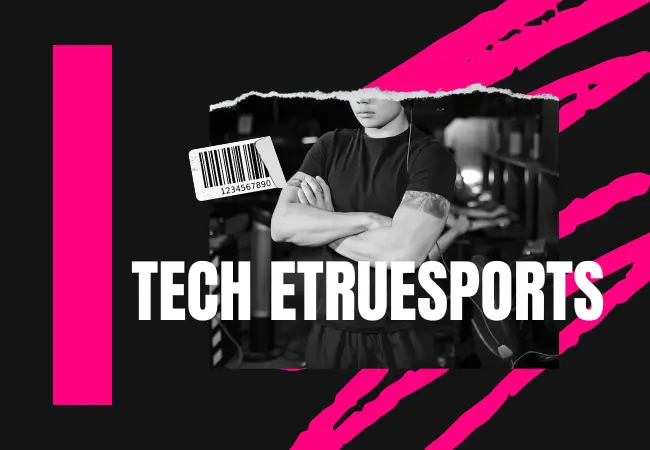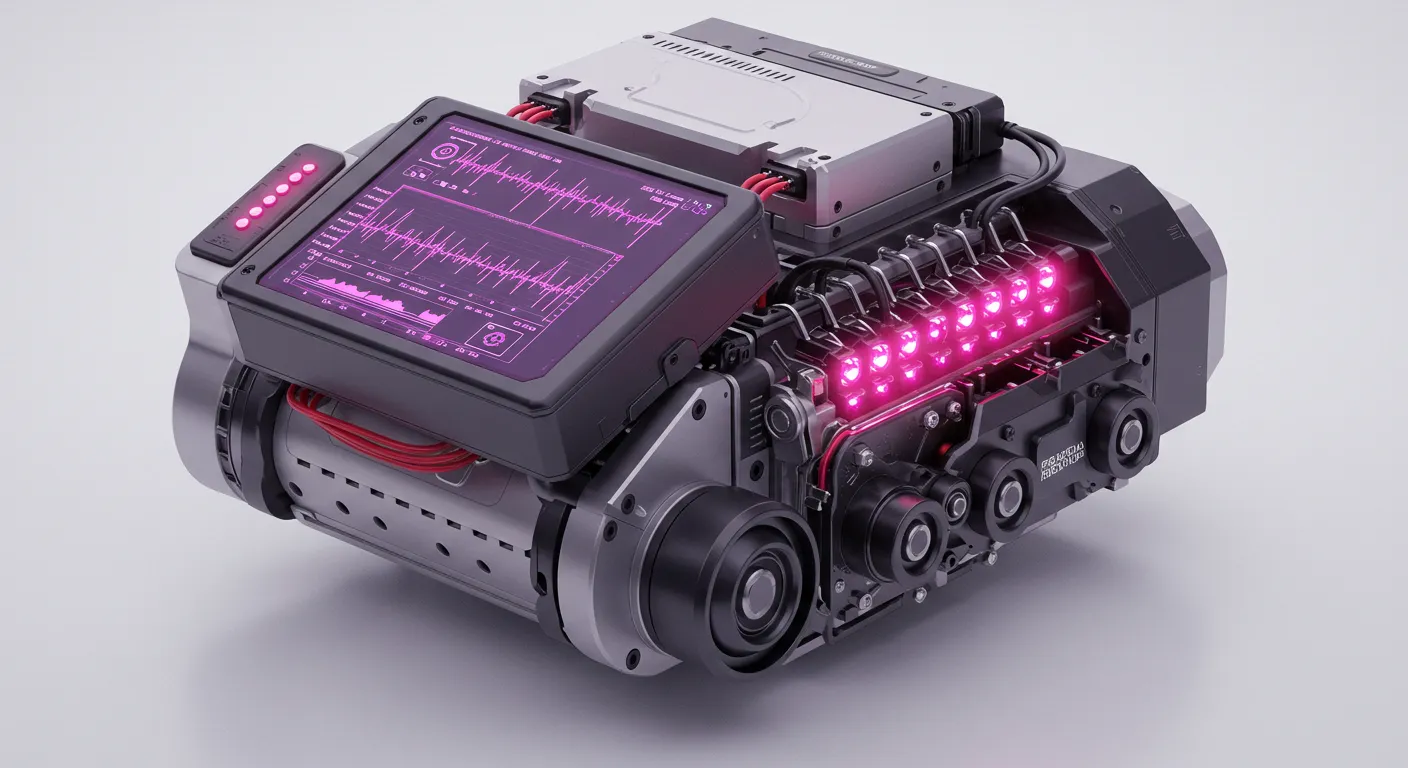Introduction
Tech etruesports has evolved from a niche hobby into a global phenomenon, attracting millions of players, viewers, and investors. This rapid growth has been driven by a combination of factors, but none more significant than the advancements in technology. From cutting-edge hardware to sophisticated analytics tools, technology is at the heart of eSports, transforming how games are played, watched, and monetized.
In this article, we’ll dive deep into the intersection of tech etruesports, exploring how innovations are reshaping the landscape of competitive gaming. We’ll look at the impact of tech on players, teams, and fans, and what the future holds for this fast-evolving industry.
| Heading | Sub-Topics |
|---|---|
| Introduction | The Rise of eSports and the Role of technology |
| The Evolution of eSports Technology | How tech has shaped eSports from its beginnings |
| Advanced Gaming Hardware | The role of high-performance PCs, peripherals, and consoles |
| Streaming Technology and Platforms | The growth of live streaming and its impact on eSports |
| Data Analytics in eSports | How data-driven strategies are changing the game |
| Artificial Intelligence in eSports | AI’s role in player training, game development, and strategy |
| Virtual Reality and Augmented Reality in eSports | The future of immersive gaming experiences |
| The Role of Cloud Gaming | The Rise of eSports and the role of technology |
| eSports and Mobile Technology | The rise of mobile eSports and its technological demands |
| Cybersecurity in eSports | Protecting players, teams, and fans in the digital age |
| Wearable Tech and Performance Monitoring | Enhancing player performance with real-time data |
| eSports Betting and Blockchain Technology | The role of Social Platforms in building eSports communities |
| Social Media and Community Engagement | How Cloud Technology is making eSports more accessible |
| The Impact of 5G on eSports | How next-gen connectivity is transforming competitive gaming |
| Tech-Driven Sponsorships and Marketing | Innovative ways brands are leveraging technology in eSports |
| Environmental Impact of eSports Technology | Addressing sustainability in the rapidly growing industry |
| The Future of eSports Arenas | Tech-enhanced venues for the ultimate spectator experience |
| Tech in eSports Education and Training | How technology is shaping the next generation of eSports talent |
| Inclusivity and Accessibility in eSports | Making eSports more inclusive through technology |
| The Future of eSports Technology | Predictions and trends for the next decade |
| Frequently Asked Questions about Tech in eSports | Common queries answered |
| Conclusion | Recap of technology’s transformative impact on eSports |
The Evolution of Tech transports
Tech transports has come a long way from its humble beginnings, where competitive gaming was confined to local tournaments and small gatherings. In the early days, gamers relied on basic technology, with rudimentary PCs and early gaming consoles like the Atari 2600 and NES. However, as technology advanced, so too did the potential for eSports.
With the advent of high-speed internet and powerful gaming hardware in the late 1990s and early 2000s, online multiplayer games like Counter-Strike, StarCraft, and Warcraft III became the foundation of modern tech and esports. These technological advances allowed players to compete globally, leading to the birth of organized leagues and international tournaments.
As technology continued to evolve, so did the scale and sophistication of tech transports. Today’s industry features massive prize pools, professional teams, and millions of fans worldwide.
Advanced Gaming Hardware

Gaming hardware has seen tremendous advancements at the core of tech transports. High-performance PCs, equipped with powerful GPUs and CPUs, enable smooth gameplay at high frame rates, essential for competitive gaming. Monitors with high refresh rates and low response times provide players with the split-second reactions needed to succeed at the highest levels.
Peripherals, too, have become specialized for eSports. Gaming mice, keyboards, and headsets are now designed with ergonomics, precision, and durability in mind, catering to the specific needs of professional gamers. The development of gaming consoles like the PlayStation and Xbox has also contributed to the growth of console-based eSports, offering standardized platforms for competition.
This focus on hardware extends beyond the players, as eSports venues are now equipped with state-of-the-art technology to enhance the spectator experience. High-definition screens, immersive sound systems, and even augmented reality (AR) displays are becoming standard features in modern eSports arenas.
Streaming Technology and Platforms
One of the biggest drivers of tech etruesports popularity is the ability to stream competitions live to a global audience. Platforms like Twitch, YouTube Gaming, and Facebook Gaming have revolutionized how eSports is consumed, offering fans the ability to watch their favorite players and teams in real-time from anywhere in the world.
The technology behind these platforms is crucial to their success. High-quality video encoding, low-latency streaming, and interactive features like chat and viewer polls have made watching eSports a highly engaging experience. Additionally, advancements in mobile streaming have made it possible for fans to watch live eSports events on their smartphones, further broadening the audience.
Moreover, streaming technology has democratized eSports, allowing aspiring players to showcase their skills to a global audience and build their communities. This has led to the rise of esports influencers and content creators, who play a vital role in the ecosystem.
Data Analytics in tech etruesports
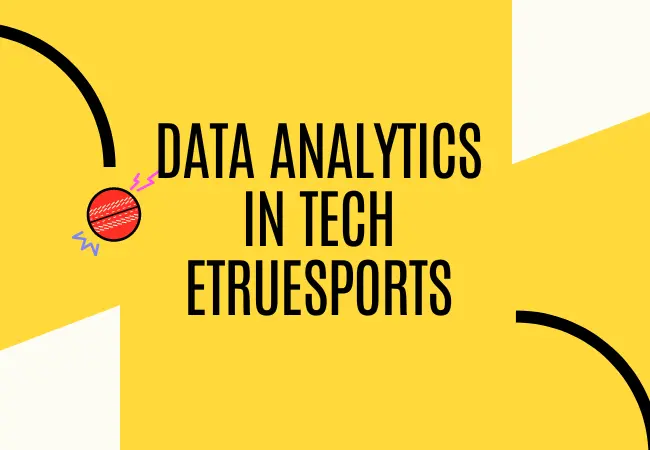
Data analytics is becoming increasingly important in tech etruesports, providing teams and players with insights that can give them a competitive edge. Just as in traditional sports, data-driven strategies are being used to analyze gameplay, optimize training, and scout new talent.
Advanced analytics tools can track a wide range of metrics, from player performance and in-game statistics to audience engagement and social media trends. Coaches use this data to refine strategies, while players can review their gameplay to identify areas for improvement.
Beyond the game itself, data analytics is also helping to grow the business side of eSports. By analyzing viewer behavior and engagement, organizations can tailor their marketing strategies, improve fan experiences, and maximize sponsorship opportunities.
Artificial Intelligence in tech etruesports
Artificial Intelligence (AI) is beginning to make its mark on tech etruesports in several ways. AI-driven bots are being used to train players by simulating different scenarios and opponents. These bots can adapt to a player’s style, offering a level of practice that is difficult to achieve with human opponents.
AI is also being integrated into game development, with algorithms that can adjust game difficulty, create more realistic environments, and even design new game elements. For example, AI can be used to generate complex maps or balance gameplay in real time, ensuring a fair and challenging experience for all players.
Furthermore, AI is playing a role in enhancing the viewer experience. Machine learning algorithms can analyze live streams to automatically generate highlights, predict match outcomes, and provide real-time commentary, making broadcasts more engaging and informative.
Virtual Reality and Augmented Reality in tech etruesports
Virtual Reality (VR) and Augmented Reality (AR) are poised to take tech etruesports to a whole new level of immersion. VR eSports, where players compete in fully immersive virtual environments, is an emerging trend that could redefine how we think about competitive gaming. Games like Beat Saber and Echo Arena are leading the charge, offering a glimpse into the future of VR-based eSports.
AR, on the other hand, is enhancing the spectator experience. During live events, AR can be used to overlay digital information onto the physical world, providing real-time stats, player bios, and other interactive elements. This technology can also bring new dimensions to in-game broadcasts, making them more dynamic and engaging for viewers.
While still in its early stages, the integration of VR and AR into eSports holds great potential for creating unique and immersive experiences for both players and fans.
You May also Read:The Power of Gidler in the Digital Age
The Role of Cloud Gaming
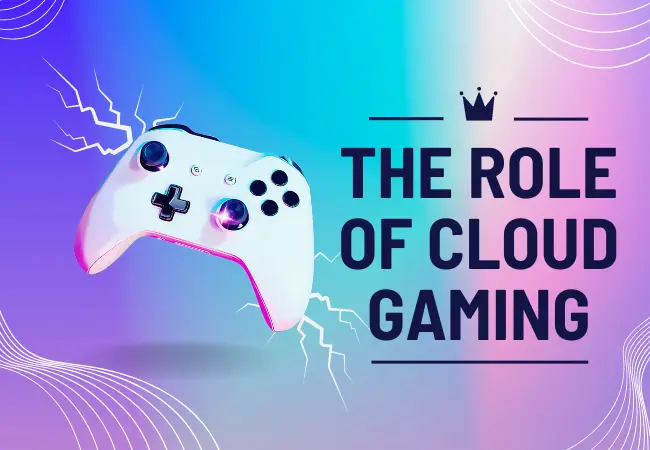
Cloud gaming is another technological innovation that is making tech etruesports more accessible. By streaming games directly from the cloud, players can enjoy high-quality gaming experiences on a wide range of devices, including lower-end PCs, tablets, and even smartphones.
This technology removes the barrier of needing expensive hardware to compete at a high level, democratizing access to eSports. Platforms like NVIDIA GeForce Now, Google Stadia, and Microsoft xCloud are already showing how cloud gaming can expand the reach of eSports, making it possible for more people to participate and compete.
Cloud gaming also offers new possibilities for live events, where players can compete without needing to bring their equipment, reducing costs and logistical challenges for tournament organizers.
tech etruesports and Mobile Technology
Mobile gaming has grown rapidly, and with it, mobile tech etruesports. Games like PUBG Mobile, Clash Royale, and Arena of Valor have established themselves as major eSports titles, attracting millions of players and viewers.
The rise of mobile eSports has been facilitated by advancements in mobile technology, including faster processors, better graphics, and improved network connectivity. Mobile devices are now capable of delivering gaming experiences that rival traditional consoles, making them a viable platform for competitive gaming.
Mobile eSports also opens up new markets, particularly in regions where access to high-end gaming PCs and consoles is limited. This has led to a more diverse global eSports community, with mobile tournaments drawing participants from all corners of the world.
Cybersecurity in tech etruesports
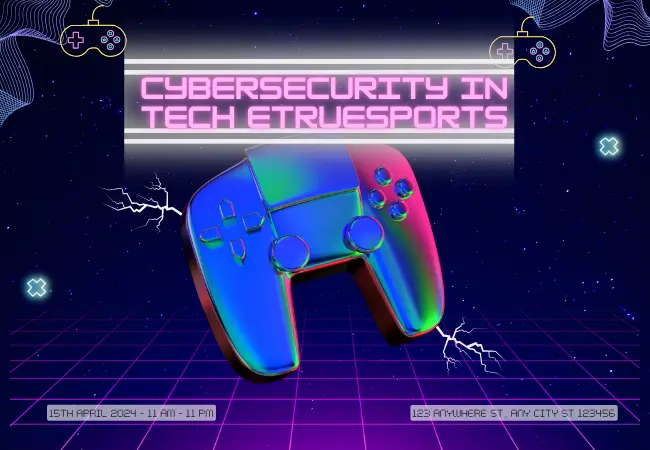
tech etruesports grows in popularity and financial stakes increase, cybersecurity has become a critical concern. Players, teams, and organizers are all potential targets for cyberattacks, ranging from DDoS attacks and account hacks to more sophisticated threats like match-fixing and data breaches.
To combat these threats, tech etruesports organizations are investing in robust cybersecurity measures. This includes the use of encrypted communications, multi-factor authentication, and real-time monitoring systems to detect and respond to potential threats.
Moreover, as tech etruesports betting becomes more prevalent, ensuring the integrity of matches is paramount. Blockchain technology is being explored as a solution to enhance transparency and security in eSports betting, reducing the risk of fraud and ensuring fair play.
Wearable Tech and Performance Monitoring
In the highly competitive world of tech etruesports, even the smallest performance gains can make a difference. Wearable technology is being used to monitor players’ physical and mental states, providing data that can be used to optimize performance.
For example, devices that track heart rate, stress levels, and reaction times can help players and coaches understand how different factors affect gameplay. This data can then be used to develop personalized training regimens, improve focus, and prevent burnout.
Wearable tech is also being integrated into esports broadcasts, offering viewers insights into the physiological responses of players during high-pressure moments. This adds another layer of engagement to the viewing experience, making it even more compelling for fans.
tech etruesports Betting and Blockchain Technology
Tech etruesports betting market is growing rapidly, and with it comes the need for greater transparency and security. Blockchain technology is being explored as a way to address these concerns, offering a decentralized and tamper-proof system for placing bets and tracking outcomes.
By using blockchain, tech etruesports betting platforms can provide a higher level of trust and fairness, as all transactions are recorded on a public ledger that cannot be altered. This not only reduces the risk of fraud but also ensures that all parties can verify the results of bets independently.
Blockchain is also being used to create new types of digital assets within eSports, such as non-fungible tokens (NFTs) that represent in-game items, player cards, or even shares in teams. These innovations are opening up new revenue streams and investment opportunities within the eSports ecosystem.
Social Media and Community Engagement
Social media plays a crucial role in the tech etruesports ecosystem, serving as the primary platform for community engagement, content sharing, and fan interaction. Platforms like Twitter, Instagram, and Discord have become essential tools for teams and players to build their brands, connect with fans, and share content.
The integration of social media with live-streaming platforms has further enhanced community engagement. Viewers can interact with their favorite players in real time, participate in polls, and even influence the outcome of certain events. This level of interactivity has helped foster a sense of community within eSports, turning fans into active participants rather than passive observers.
The Impact of 5G on tech etruesports
The rollout of 5G technology is set to have a profound impact on tech etruesports, enabling faster and more reliable connections that are crucial for competitive gaming. With lower latency and higher bandwidth, 5G will enhance the quality of online matches, reduce lag, and allow for more complex game environments.
For mobile eSports, 5G will be a game-changer, allowing for real-time multiplayer experiences on the go. It will also enable new forms of content, such as augmented reality overlays and live data streams, further enriching the eSports experience for players and viewers alike.
Tech-Driven Sponsorships and Marketing
Technology is also transforming how sponsorships and marketing are done in tech etruesports. Brands are leveraging data analytics, social media, and influencer marketing to target specific demographics with tailored campaigns. Virtual and augmented reality are being used to create immersive branded experiences, both in-game and during live events.
In addition, tech-driven platforms are enabling more personalized and interactive sponsorships. For example, fans can receive custom content based on their favorite teams or players, or participate in branded challenges for rewards. This level of engagement makes sponsorships more effective and relevant in the digital age.
Environmental Impact of eSports Technology
While technology has brought many benefits to eSports, it also raises concerns about environmental impact. The energy consumption associated with high-performance gaming hardware, data centers, and live event productions can be significant. As the industry continues to grow, there is a need to address sustainability issues.
Some eSports organizations are already taking steps to reduce their carbon footprint by investing in renewable energy, optimizing data center efficiency, and promoting sustainable practices within their communities. As awareness of environmental issues grows, sustainability is likely to become an increasingly important consideration in the development and deployment of eSports technology.
The Future of eSports Arenas

As eSports continues to grow, so too does the demand for dedicated venues. The future of eSports arenas will be defined by technology, with venues equipped to provide immersive, interactive experiences for both live and online audiences.
Next-generation eSports arenas will likely feature advanced AV systems, real-time data displays, and even augmented reality elements that enhance the spectator experience. These venues will also be designed with flexibility in mind, allowing them to host a wide range of events, from large-scale tournaments to smaller, community-focused competitions.
The integration of smart technology, such as IoT devices and AI-driven systems, will further enhance the functionality and efficiency of these venues, making them state-of-the-art hubs for eSports.
Tech in eSports Education and Training
As eSports becomes more professionalized, there is a growing demand for formal education and training programs. Technology is playing a key role in this development, with online courses, virtual coaches, and data-driven training tools becoming increasingly common.
Educational platforms are offering courses on everything from game design and development to business management and marketing within the eSports industry. Virtual reality and AI are being used to create realistic training environments, allowing players to hone their skills in a controlled setting.
These tech-driven educational resources are not only helping to produce the next generation of eSports talent but also preparing individuals for a wide range of careers within the industry, from coaching and analysis to event management and content creation.
Inclusivity and Accessibility in eSports
One of the most promising aspects of technology in eSports is its potential to make the industry more inclusive and accessible. Assistive technologies, such as adaptive controllers and customizable input devices, are enabling individuals with disabilities to participate in competitive gaming.
Moreover, online platforms are breaking down geographic barriers, allowing players from diverse backgrounds to compete on an equal footing. This has led to a more diverse player base and has opened up opportunities for underrepresented groups in eSports.
As the industry continues to grow, technology will play a crucial role in ensuring that eSports remains an inclusive and welcoming space for all players, regardless of their physical abilities, background, or location.
The Future of eSports Technology
Looking ahead, the future of eSports technology is filled with exciting possibilities. Advances in AI, VR, AR, and 5G will continue to push the boundaries of what is possible in competitive gaming, creating new opportunities for players, teams, and fans alike.
As eSports becomes more integrated with mainstream sports and entertainment, we can expect to see even greater innovation, with new formats, platforms, and experiences that blur the lines between gaming, sports, and media.
Ultimately, the future of eSports technology will be shaped by the creativity and passion of those within the industry, as they continue to explore new ways to engage audiences, enhance gameplay, and expand the reach of competitive gaming. Visit our blog to keep up with recent developments and insightful content.
Conclusion
Technology has been a driving force behind the explosive growth of eSports, transforming it from a niche hobby into a global industry. From cutting-edge hardware and AI-driven strategies to cloud gaming and mobile eSports, innovation continues to push the boundaries of what is possible in competitive gaming. As we look to the future, it’s clear that technology will play an even greater role in shaping the next chapter of eSports, creating new opportunities for players, teams, and fans around the world.

